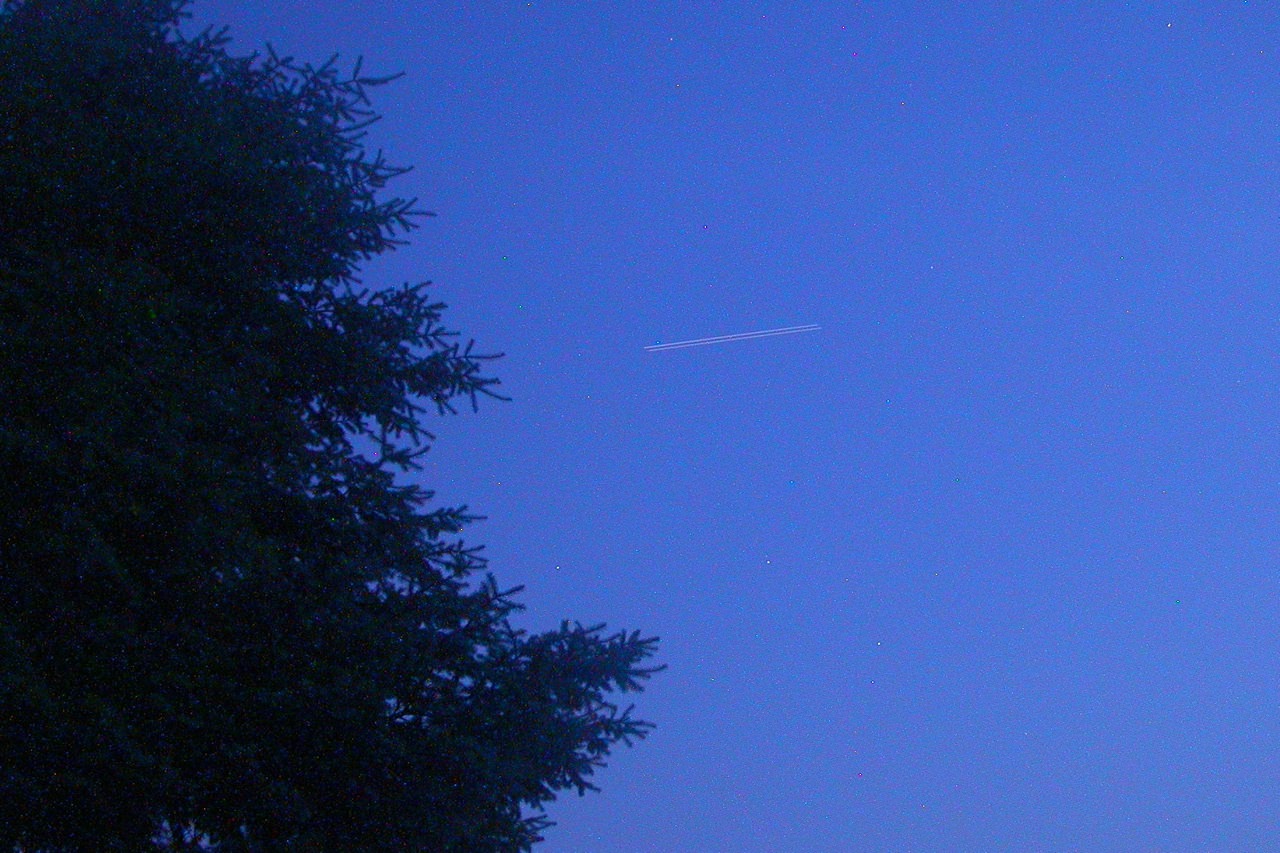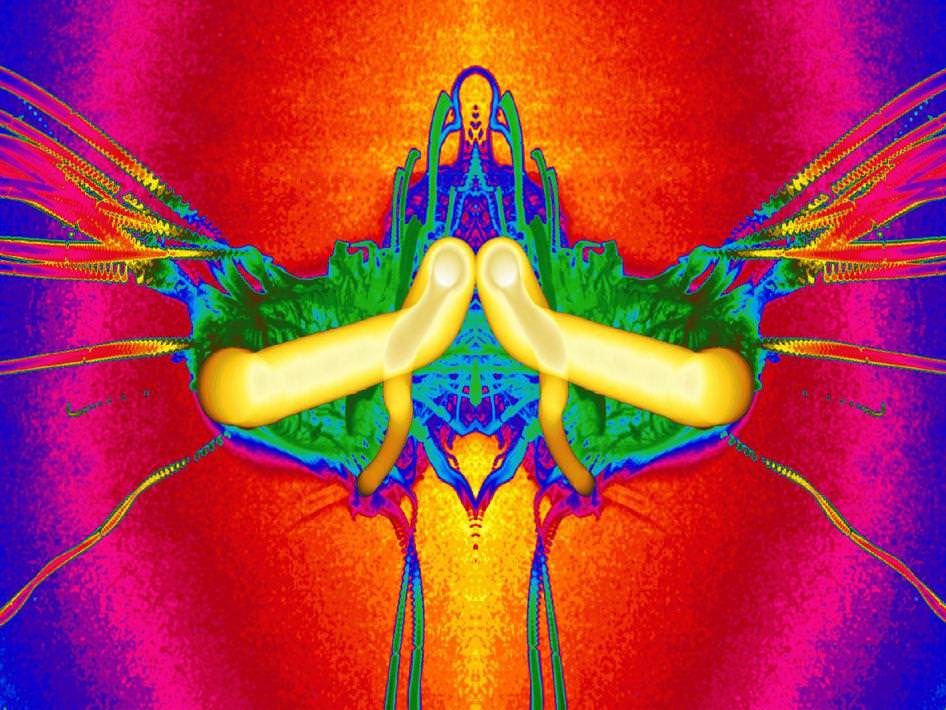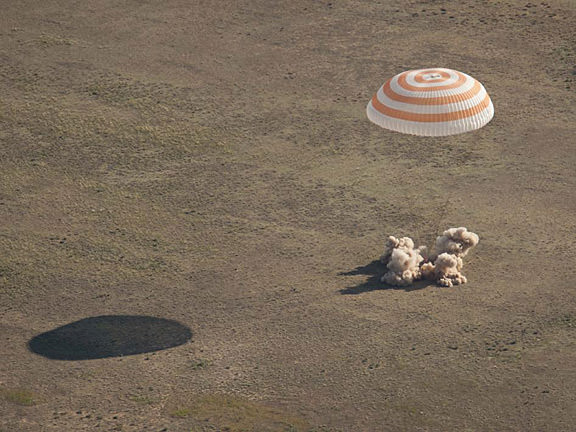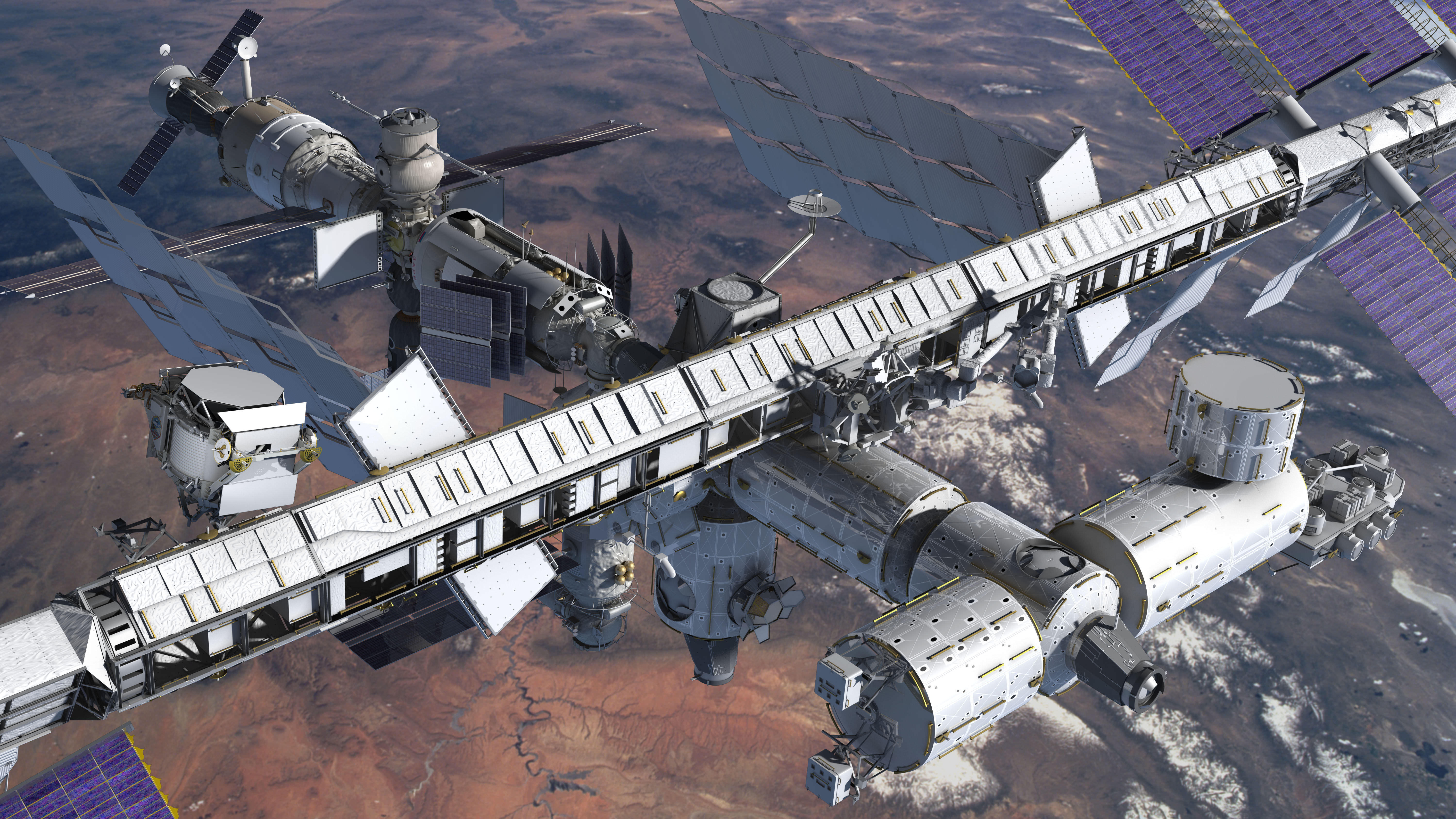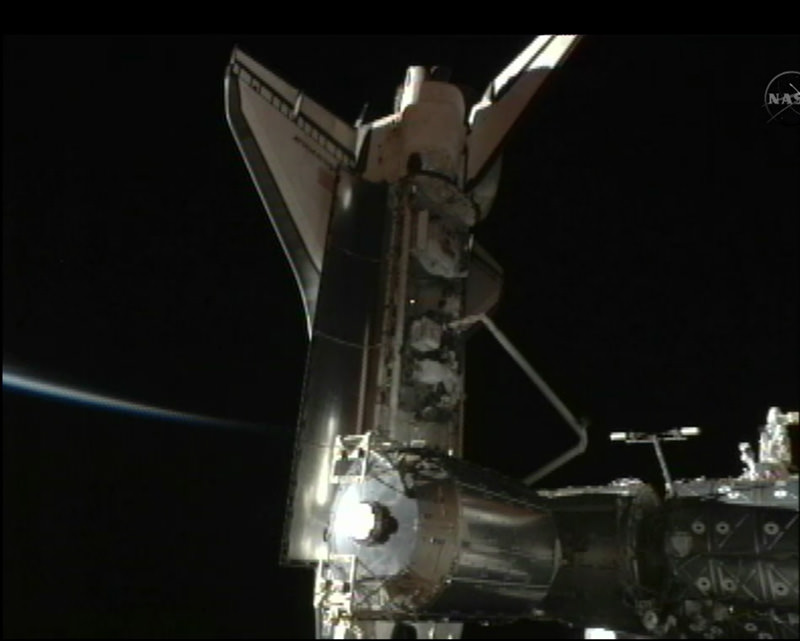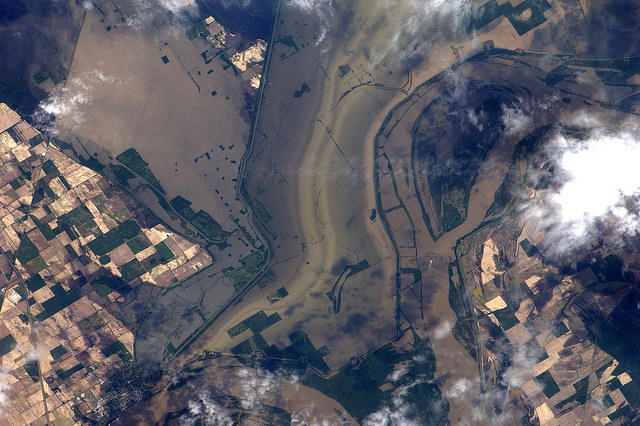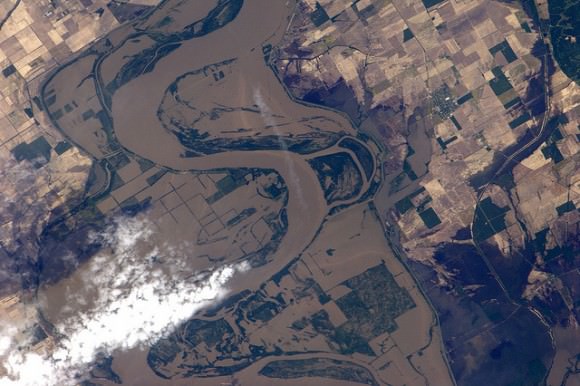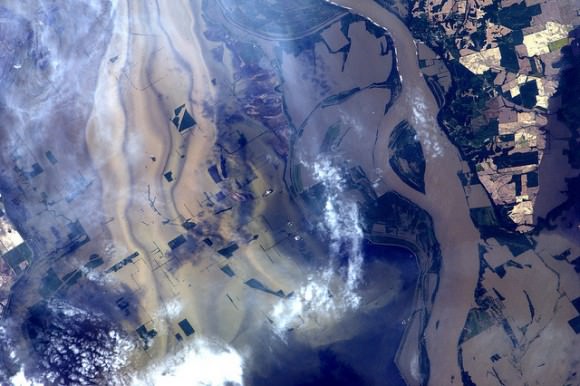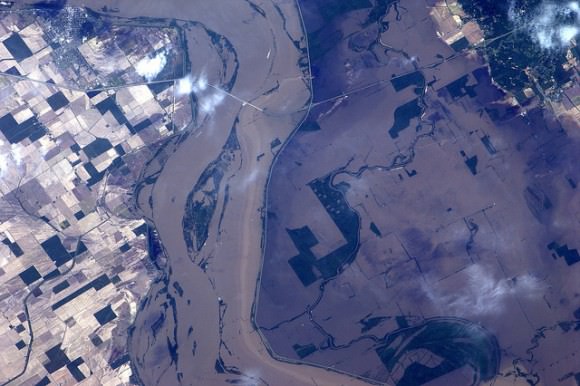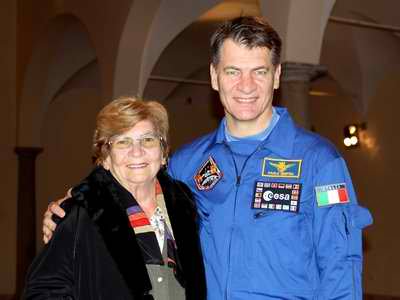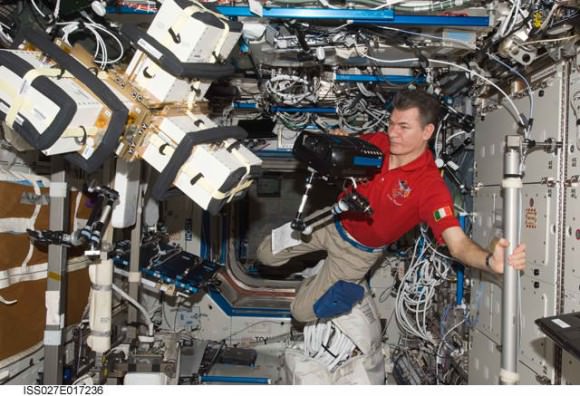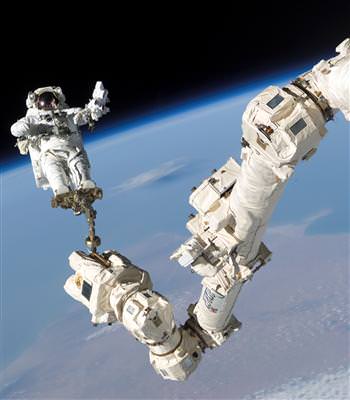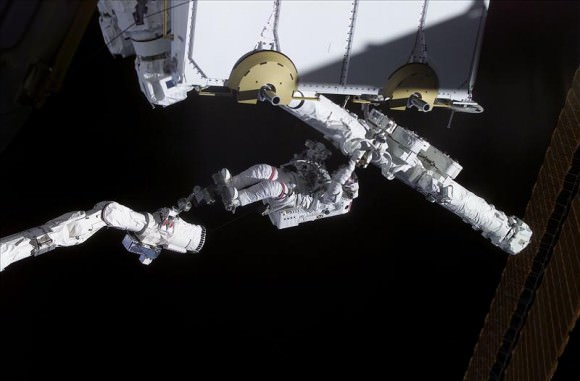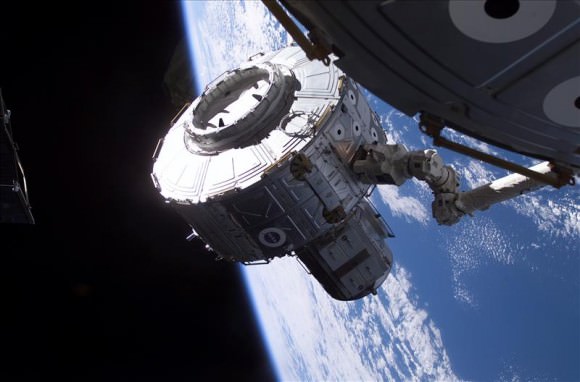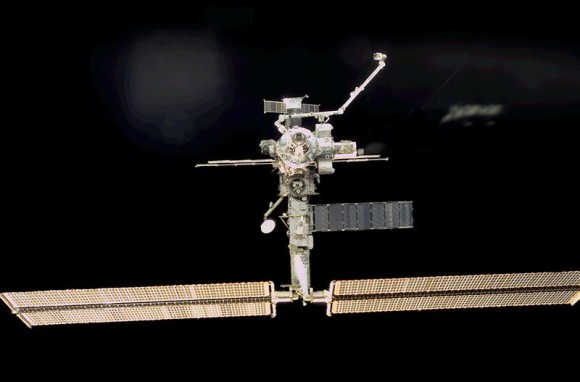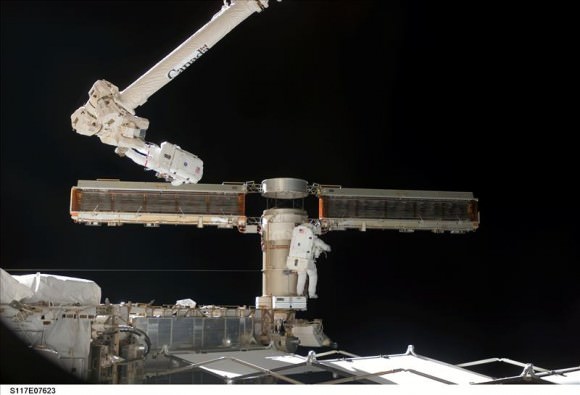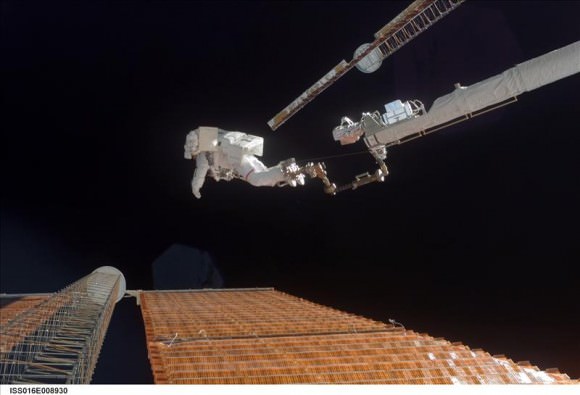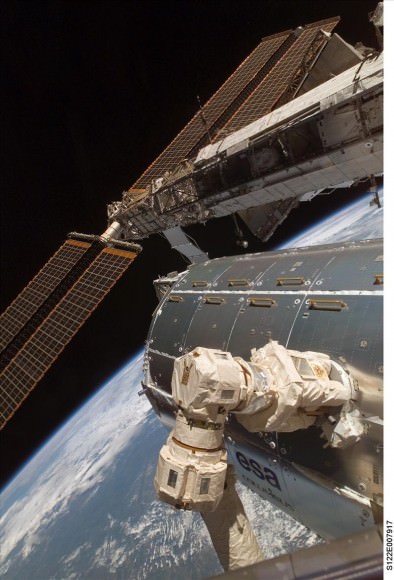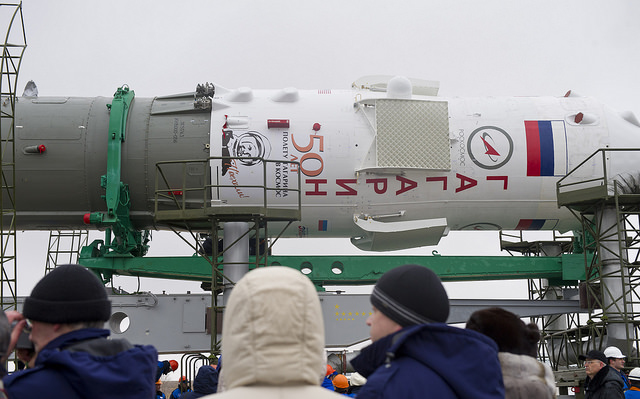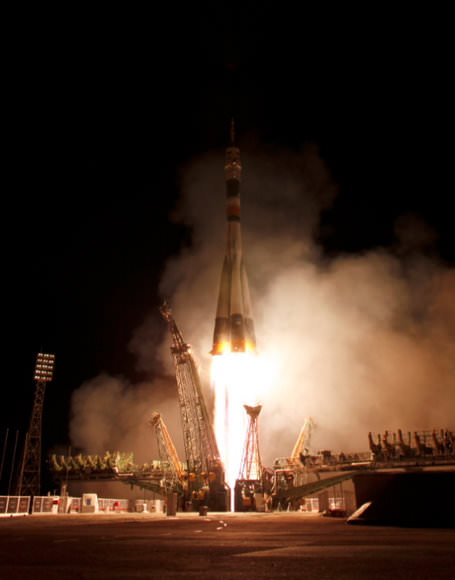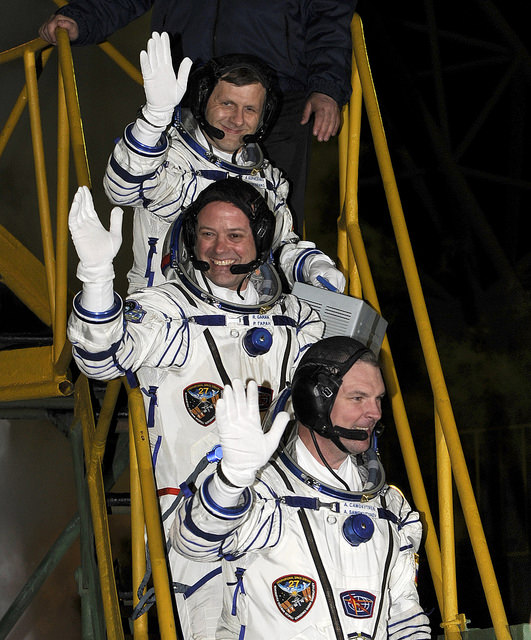[/caption]
UPDATE: And we have a sighting! Beth Katz from Pennsylvania in the US sent us this image,an 8 second exposure of the ISS and Endeavour taken early this morning. “We observed them seeming even further apart and then closer as they moved away from us,” Beth said via email.
Space shuttle Endeavour will undock from the ISS just before midnight EDT on Sunday night/Monday morning at 11:55 pm EDT (3:55 UTC) and depending where you live, you might have an opportunity to see the two spaceships flying in tandem. People in Europe might have the chance to see the two spaceships right after they separate in the early morning hours, and people in the US/Canada/Mexico might be able to see the two flying close to each other. This is an incredible sight, and will be the last opportunity to see Endeavour in orbit, as she will be retired after she lands and completes the STS-134 mission. The station and shuttle will appear in the night or early morning sky as a closely-spaced pair of bright lights. The ISS is bigger, so will appear as the brighter object trailing the smaller Discovery as they move across the sky.
On Monday night/Tuesday morning, there will be another chance to see the two ships, although they will be widely separated.
To find out if you’ll be able to see the two spaceships in your area, there are a few different sites to check out:
NASA has a Skywatch page where you can find your specific city to look for satellite sighting info.
Spaceweather.com, has a Satellite Tracker Tool. Just put in your zip code (good for the US and Canada) to find out what satellites will be flying over your house.
Heaven’s Above also has a city search, but also you can input your exact latitude and longitude for exact sighting information, helpful if you live out in the country.
Seeing the two spacecraft flying closely in tandem is a very unique and thrilling sight. Good luck! If you manage to capture any images, send them to Nancy.

